| ||||||
| | ||||||
| “Exporting” the radical ideology of the Islamic | ||||||
 Jihad (holy war): the cover of the booklet published by the | ||||||
Overview | ||||||
I n the course of the Second Lebanon War, four copies | ||||||
| The booklet, which does not contain any mention of its  The address of the Imam Khomeini Culture Center in Harat | ||||||
| The fact that several copies of the booklet were found among | ||||||
Generally, the booklet considers jihad to be a | ||||||
The significance of this ideology is that in Hezbollah's view, its | ||||||
The jihadist-Islamic (Shi'ite) identity of Hezbollah, | ||||||
Unique characteristics in Khamenei's view of jihad | ||||||
According to Khamenei's ideology, jihad is both a doctrine | ||||||
The view of jihad espoused by Imam Khomeini and his successor, | ||||||
Khamenei, preaching an ideology in which jihad takes a center stage, does not do so solely in his capacity as Shi'ite-Muslim cleric, but also as the leader of the Iranian regime and the supreme commander of Iran 's armed forces. He is therefore vested with the governmental authority to allocate significant resources to realize his worldview and turn it into reality. Conversely, in Sunni Islam it is only the caliph, the leader of the believers (a position which does not exist in modern times), who may declare jihad. So far, no Arab country has espoused jihad as an official strategy. Similarly to Khamenei's ideology, Sunni-Muslim fundamentalism also emphasizes jihad, as is exemplified by the Al-Qaeda organization. | ||||||
Khamenei's worldview is “exported” to Lebanon in order to disseminate it among Shi'ite Muslims and turn Hezbollah into the spearhead of the implementation of the Iranian view of jihad, a kind of Lebanese branch of the Iranian armed forces. In the Iranian view, the Hezbollah organization in Lebanon is the prime (and only) example of the Islamic revolution in Iran being successfully “exported”, an example that also bears upon the Sunni world (in which Hezbollah leader Hassan Nasrallah has gained much popular support in the wake of the Second Lebanon War, being perceived as an Arab (rather than Iranian) leader who was able to show “steadfastness” vis-a-vis the IDF). 9 | ||||||
The Hezbollah organization is therefore a unique example of a terrorist organization with Islamic-jihadist ideology rooted in the Quran and Shi'ite traditions, heavily supported and assisted by Iran . The latter considers it to be an important instrument in the struggle against Israel and in the realization of its aspirations for hegemony in the Middle East . Iran also assists Sunni-Muslim Palestinian terrorist organizations (Palestinian Islamic Jihad, Hamas); however, these do not enjoy the many resources received by the Hezbollah organization, which is clearly favored by the Iranian regime. | ||||||
| Appendix | ||||||
| Analysis of the booklet's main contents 10 | ||||||
| Overview | ||||||
The 65-page long booklet is made up of a foreword, five chapters, and a concluding chapter. The booklet, which does not mention its author or editor, was published in 2004. Khamenei's ideology, extensively referred to in the booklet, is based on a well-known saying made by Ali, “the Commander of the Faithful” and the fourth Muslim caliph, who is also considered to be the founder of the Shi'a and the legal successor to Prophet Muhammad in the eyes of Shi'ite Muslims. This saying, which serves as the booklet's motto, appears already in the beginning of the foreword: “Jihad is one of the gateways to paradise, which Allah has opened unto His most loyal believers [only].” Jihad is therefore established by Allah as the most prestigious path to paradise. “Verily, jihad is one of the gateways of paradise…” | ||||||
Since jihad is considered the believers' preferred path to paradise, as established by Allah, it follows that all Muslims (Shi'ite and Sunni alike) must strive to follow it. The desire to attain paradise creates the motivation to overcome the difficulties of this world and make a willing, fully conscious decision to join jihad. However, the text clarifies that only a select few warriors can overcome the difficulties of this world—perceived as a kind of “psychological barrier”—and join jihad. Therefore, the gates of paradise are only opened for Allah's most loyal believers (p. 6). Accordingly, the booklet praises and glorifies the mujahedin (Muslim holy warriors who fight against the infidels) and thus “the pleasure of belonging to the armed forces ”. | ||||||
In his foreword, as in the entire booklet, Khamenei preaches jihad in the spirit of traditional, Quran-based Islam, combined with Shi'ite traditions. Thus, he attempts to make his worldview acceptable to Sunni Muslims as well. | ||||||
| The goals of jihad: to please Allah and to aspire to martyrdom for His sake | ||||||
The first chapter of the booklet lays out the goals of jihad, not only on the strategic level but also on the practical-tactical level. On the personal level, jihad is designed for the Muslim individual to please Allah; that is, jihad has a clearly-defined Islamic-religious meaning. Being a jihad warrior is more than just taking part in military service per se; it is also a Muslim's religious duty that constitutes the fulfillment of a religious commandment for the sake of Allah, an act loftier than any other. | ||||||
A Muslim fulfilling this religious commandment aspires to “martyrdom for the sake of Allah” (shahada), described as a “reward” to which the dead Muslim warrior is entitled in view of all his efforts on the battlefield to combat the enemy. That is, martyrdom is in fact the pinnacle of jihad. And indeed, within this context, the text refers to the meaning of jihad, citing a verse from the Quran ( Surat al-Baqara, verse 52): “One of the two acts of the greatest beauty”. According to traditional Islamic interpretation, indicated in the booklet within this context (p. 14), these two acts, both a result of jihad, are “victory” or “martyrdom for the sake of Allah during combat” (“nasr aw istishhad”). 11 In the contemporary context, these terms are mostly used to describe suicide bombing attacks or their intended results. | ||||||
Jihad is also described ( ibid. ) as a social worldview, designed to serve the fundamentals of society rather than the individual alone, who is a part of it. These fundamentals are a) religious piety par excellence while strictly fulfilling religious commandments or duties, including the severe “penalty laws”, both on the level of the individual and on the level of society; 12 b) independence and protection of the homeland to thwart “the greed of the imperialists” by “the skillful armed [Muslim] forces”; c) a jihad warrior is also obligated to exert his utmost efforts to abolish deprivation, not only within the confines of his country but also by aiding the deprived wherever they are and instating social justice, regardless of geographic boundaries . | ||||||
| Organization and discipline within the context of jihad | ||||||
The second chapter deals with organization and discipline within the context of jihad, being the cornerstones of military life. According to the text (pp. 23-33), less than strict order and discipline is cause for unnecessary bloodshed, while bloodshed is justified only for a sole, higher cause, namely martyrdom in battle. Furthermore, the ever-changing reality calls for a “continuous adaptation of the organizational structure” in order to meet constantly changing military demands. Within this context, the text emphasizes that maintaining military hierarchy is a “religious duty”. Accordingly, the division into ranks does not contradict the brotherhood among the military personnel, since they are all equal members of the “army of Islam”. | ||||||
This is therefore yet another expression of the religious-Islamic significance of military service and the need to maintain the military framework, clearly reflected in the disciplined military framework strictly applied by the Hezbollah organization. | ||||||
| The components of a jihad warrior's power | ||||||
The third chapter in the booklet discusses the components of power” of a jihad warrior. The most important of these is “devotion to Allah” (pp. 31-33), which, as already noted by the late Imam Khomeini, is “the backbone of such warrior-believer forces as the [Revolutionary] Guards”. Improving the warriors' devotion to Allah may only take place by means of turning the combat sites into places of Islamic religious worship as well. Not only must the Muslim warrior-believer adhere to upholding religious commandments on the outside, the devotion to Allah must come from within the Muslim individual – that is, “from the heart and from the conscience”. | ||||||
| True Islam is revolutionary Islam | ||||||
One of the jihad warrior's components of power is the “revolutionary sentiment”. According to the text, “true Islam is revolutionary Islam”, which does not yield and does not accept deprivation, but rather challenges it. Such Islam is “the reason for the victories accomplished in modern times and in other eras” (p. 34). Another component is “adhering to the principle of ‘the guardianship of the jurist' (wilayat al-faqih),” being the ideological Shi'ite-Islamic foundation laid by Imam Khomeini, which has served as the basis of the Iranian regime since the Islamic revolution in 1979, and which is carried on by his successor, Khamenei. | ||||||
| The need for constant readiness for jihad | ||||||
The fourth chapter of the booklet deals with the issue of (constant) “readiness” for jihad. The beginning of the chapter sets an important principle for fighting: the advantage of carrying out a surprise attack on the enemy (p. 43). Accordingly, the holy warriors must at all times be ready and vigilant lest they lose their initiative, and so that they can meet all the military challenges they face. Such readiness must be ever-present, both materially and mentally. | ||||||
The booklet mentions several aspects pertaining to the sphere of all-encompassing readiness. Mentioned in this context is the moral-psychological aspect, comprised of several layers. The first is the “feeling of responsibility”, i.e., caring for the fate of the Muslims and the deprived (a common term referring to Shi'ites) worldwide. According to the text, an indifferent person is not a useful person, even if he possesses complete readiness in other spheres. The second layer discusses the need for self-education, referring to “educating the soul” of the Muslim individual in order to adapt it to Islamic moral and conduct codes and so that it can successfully face its challenges. | ||||||
Within this context, the booklet emphasizes the importance of endurance and “unwavering steadfastness” (al-Sabr wal-Sumud) in the face of the enemy, quoting Khamenei: “Each [member] of the [Revolutionary] Guards must achieve [a state in which], even if left utterly alone on the battlefield, he should still stand firm against all the forces in the world…” (p. 45). | ||||||
| The material aspect and the spiritual aspect within the context of the constant military readiness: quality precedes quantity | ||||||
The booklet deals with the material components of the constant military readiness, which includes the development of military capabilities by purchasing advanced military equipment and providing the Muslim warriors with military training and education. 13 Within this context, the booklet quotes a well-known verse from the Quran instructing the Muslim warriors to be fully prepared to strike fear into the enemy ( Surat al-Anfal, verse 60). | ||||||
In addition to military training, however, the Muslim warrior is required to be proficient in other skills, one of which is the understanding of political processes. Understanding these processes is part of the awareness necessary to reinforce the armed forces (mainly the Revolutionary Guards) and to help them fulfill their missions (pp. 51-52). Furthermore, political knowledge, the booklet states, comprises part of the religious education that should be the province of all Muslims. Within this context, Khamenei states that “every member of the [Revolutionary] Guards must be religious” (p. 52). | ||||||
Khamenei is quoted as saying it is better that the Revolutionary Guards include just a few brigades, armed with modern military equipment, political awareness, and ideology, stressing that this is preferable to forming “50-60” (non-quality) brigades (pp. 49-50). The Iranian experience of the Revolutionary Guards, since the beginning of the Islamic revolution, therefore serves as a model to be emulated in the booklet published in Lebanon and distributed to Hezbollah fighters there. | ||||||
| Abiding by the Islamic code of ethics | ||||||
| The fifth and final chapter of the booklet discusses the “program of action” necessary for the success of jihad. The program of action must be restrained, subdued, and moral. In order for a military action—“particularly a revolutionary one”—to be effective, it must be based on interaction between the warriors and the Muslim public. Accordingly, it is necessary to treat the public with much sensitivity in order to avoid a twisted perception of the army, which may push the public away from the desire to take part in the jihad (pp. 57-58). | ||||||
| The importance of “self-sacrifice” within the context of jihad | ||||||
A central component in jihad is “self-sacrifice” (al-tadhiya), being the basis for military activity. Self-sacrifice during military activity creates motivation and desire for martyrdom for the sake of Allah (hubb al-shahada). | ||||||
| Conclusion: the meaning of jihad and its significance in universal Islamic context | ||||||
The booklet ends with an emotional, dramatic, and direct plea to “the believer who fights the holy war against the infidels”, to take pride in being “the element of power for restoring truth and eradicating lies” (p. 62). This is an expression which describes, in fact, the main purpose of the universal message of Islam according to Khamenei. Therefore, the “warrior-believer” is told that he is part of revolutionary Islam, which stands for the “abolishment of deprivation” and encourages the various peoples (Muslims and non-Muslims alike) to do away with “dominance” (i.e., foreign rule). | ||||||
Correspondingly, the “warrior-believer” is told the following: “All eyes are upon you, awaiting your actions, which have bestowed honor upon the [Muslim] nation, followed by a succession of victories.” “At the same time,” it is stated in the conclusion, “you have been the faithful servant who fires no bullet but to please Allah. For you have left this world and sought martyrdom for the sake of Allah. Then the gates of jihad were opened unto you, which are opened by Allah only for his most loyal believers, as noted by the Commander of the Faithful [Caliph Ali]. Therefore, you must acquaint yourself with the grace in which you dwell, and you must feel and thank Allah, may He be exalted, and ask Him to pave a straight, steady path before you, and remain true to it.” | ||||||
1 The Intelligence and Terrorism Information Center would like to thank Dr. Shimon Shapira and Dr. Soli Shahvar for their comments on the document. 2 The booklet, which bears a general ideological-philosophical character, does not explicitly mention Hezbollah, in the possession of whose operatives it was found. 3 The “ Culture Center ” has other branches in Lebanon , such as in Baalbek . Among other activities, such “Culture Centers” are engaged in disseminating radical political ideology, exported by the Islamic revolution in Iran . 4 In the mid-1990s, Iranian leader Khamenei appointed Hassan Nasrallah his religious Islamic representative (wakil shar'i) in Lebanon . In recent years, it seems that, in view of his workload as secretary-general of Hezbollah, Hassan Nasrallah was forced to give up his title, which was transferred to senior Hezbollah official Sheikh Muhammad Yazbek. However, the media and the internet sometimes still assign this title to Hassan Nasrallah. 5 Wali is short for “Wali Amr al-Muslimin”, meaning the leader of all (Shi'ite) Muslims. This is the title carried by Khamenei, who, despite being Khomeini's successor, did not receive the latter's title (Wali Faqih) since his level of achievements in Islamic religious law was inferior to that of Khomeini or other senior ayatollahs. The compromise achieved was that Khamenei would be called “leader”. 6 In his interrogation, Hussein Ali Suleiman, a Hezbollah terrorist taken captive during the war, described his training in Lebanon and Iran during his activity for the organization. Among other things, he noted that the basic training also included religion classes (a summary of the findings of his interrogation can be found in our Information Bulletin entitled: “Hezbollah operative captured during the ongoing confrontation admitted … ”, published on August 8). 7 In an interview recently granted by Abdallah Safi al-Din, Hezbollah's representative in Iran , to Iranian daily Sharq, he was called to address a statement made by Mohtashemi Pour, a senior Iranian figure who played a key role in the establishment of Hezbollah, according to which Hezbollah is the spiritual product of Imam Khomeini, Iran , and Iran 's Islamic revolution. Safi al-Din replied: “Imam Khomeini had teachings, and we love those teachings and accept them. Our relations with Iran on that basis are firm, and I think that was Mohtashemi Pour's meaning” (Sharq, August 21, 2006). 8 A number of revolutionary organizations were created following the victory of the Islamic revolution in Iran ; they were designed to provide an immediate solution to urgent needs. One such organization was Jihad-e Sazandegi (jihad of building/construction), whose goal was to assist anti-royalist families whose houses had been damaged under the Pahlavi (ex-Shah) rule, during the revolution and the Iran-Iraq War, as well as to solve the pressing housing problems of the weak and traditional sectors of society. Hezbollah's Jihad al-Binaa', currently helping rebuild the infrastructures damaged in the Second Lebanon War, is another expression of replicating/imitating the Iranian model in Lebanon . 9 Most Arab regimes, however, fear Hezbollah, considering it to be an organization that implements the policy of the Iranian regime. 10 Analysis by Dr. Yoram Kahati, a Senior Researcher and Deputy Director of the Intelligence and Terrorism Information Center . 11 See: Etan Kohlberg, “Medieval Muslim Views on Martyrdom”. Proceedings of the Royal Netherlands Academy of Arts and Sciences, the Humanities and Social Sciences Division. Amsterdam : 1997, New Series, Vol. 60, No. 7, p. 286. 12 Within this context, Khamenei mentions the way the Iranian Revolutionary Guards fully fulfilled that instruction, even if at times it conflicted with their own personal interests (p. 15). 13 Quoted within this context is a statement by Khamenei, according to which the Revolutionary Guards must obtain a suitable military education to overcome their weaknesses. | ||||||
Set Your Watch with B'nai Elim Jerusalem Time
Jerusalem On Line - Channel 2 News from Israel
UN Doomsday Treaty With Ginny Simone
04 September 2006
Al-Jihad, A booklet captured in Lebanon by the IDF
Subscribe to:
Post Comments (Atom)
Colonel Richard Kemp, British Army - Comment on the IDF's Actions in Gaza
Radical Islams Plans for Western Civilization
THE THIRD JIHAD - WATCH THIS IMPORTANT FILM NOW - FREE
Obama's true agenda...Throw Israel Under the Bus
****Regarding Obama’s Speech before the U.N. Obama has surpassed the peanut farmer Jimmy Carter as the worst and most anti-Israel, anti-Semitic, Arabist President who has ever occupied the White House. Not only is he is a narcissistic moron who is dragging America into an abyss; Obama is the most dangerous threat to World Freedom, Liberty and Western Civilization since Hitler. (Blogmaster)
Senator Joe Leiberman 'Islamist Extremist Regime'
JOHN VOIGHT ON OBAMA'S DISTAIN FOR ISRAEL
CHAZAK CHAZAK
ON THE PATH TO MUSLIM DOMINATION - REVERSABLE? STOPPABLE?
2 STATE SOLUTION - COMMENTARY BY THE "18"
A message to the Jewish people and the entire world
Chronicles I - 16:15-18: "Forever remember His covenant that he commanded forever; That He made with Abraham and swore to Isaac; and confirmed in a decree for Jacob, for Israel, as an eternal covenant; saying to You I will give the Land of Cannan as your alloted heritage"
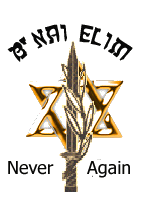
















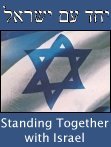

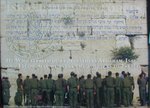
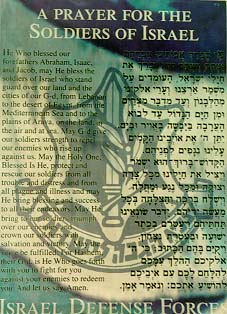













 While doing IDF (Israel Defence Forces) reserve duty on a mountain overlooking the
While doing IDF (Israel Defence Forces) reserve duty on a mountain overlooking the 

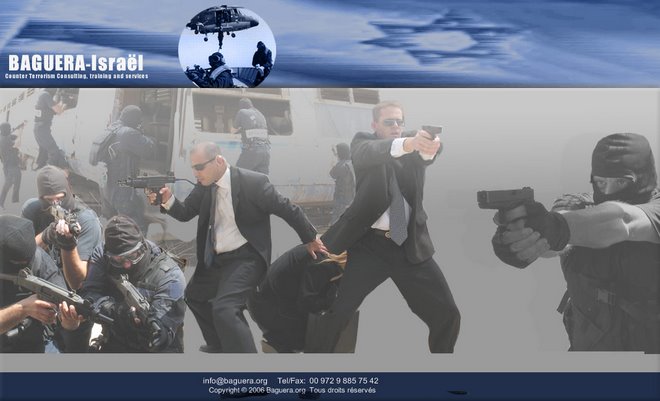



No comments:
Post a Comment